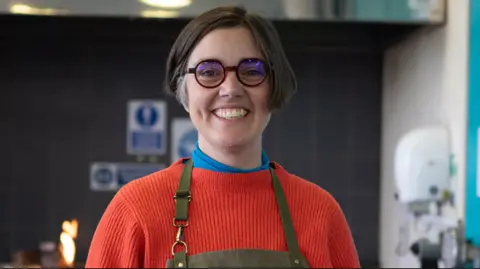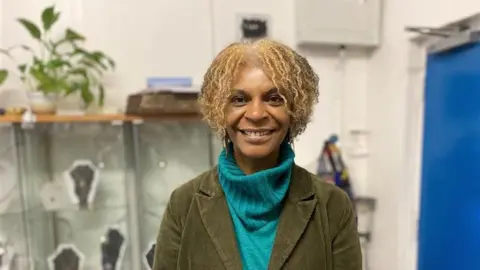What World Craft City award means for jewellers
 Birmingham City University
Birmingham City UniversityBirmingham's Jewellery Quarter has sat nestled next to the city centre creating some the worlds finest jewellery for 250 years, but has done so quietly it seems.
"As jewellers we don't shout out about our work", says Birmingham City University academic Rebecca Skeels. "The Jewellery Quarter still makes 40% of the jewellery that comes out of the UK."
Now the city's global influence in jewellery making has been recognised with the award of World Craft City status.
But what does it mean for Birmingham, known as the city of a thousand trades, and it's 4,000 strong jewellery community?
"This title means we really get to celebrate the history and future of the industry in the area.
"It's been here for over 250, years, through innovation of new things, like electroforming, plating and stone setting - particular skills that were developed and invented here," the jewellery lecturer said.
Ms Skeels said one reason for the established jewellery industry in the heart of the city is due to the Assay Office opening in 1773.
The Birmingham Assay Office is responsible for hallmarking, a system of grading, the quality of jewellery and metal work, and is one of four offices in the UK.
"The Assay Office encouraged a lot of trade in the area, so as the population of jewellers grew, that's how it got its name.

As the industry steadily boomed, it brought with it a transformation of architecture. What are now shop fronts showcasing artisan jewellery were once the homes of jewellers who would craft work in their back room.
Ms Skeels said the reason many shops in the area still look like old houses is testament to the humble beginnings of many world-known jewellers and metalsmiths.
"Lot of craftspeople were just setting up in their homes, with small factories developing in their houses."
Whistle manufacturer ACME Whistles was founded in the Jewellery Quarter.
"Joseph Hudson set up in his house on a bench right here, that is something we don't shout about."
Norma Banton, who runs MasterPeace Academy, said she hoped the international recognition would give exposure to the hidden histories.
"I'm excited for the next generation of jewellers and for the black jewellers because we need to raise our profile."
She described how, historically, the talent and contribution of black people within the Jewellery Quarter had been overlooked by their time working in the factories during the post-war British Windrush years.
She added that it would give an opportunity to people who don't see themselves in the industry the belief they equally belong.
"We do need to raise our voices to let the world know that we're here, and let the next generation of jewellers know that this trade is really for them.
"The Jewellery Quarter is quiet affluent, yet surrounded by Handsworth, Hockley, Aston, Lozells and Ladywood, areas considered by some as more marginalised.
"I hope this will be the beginning of us as jewellers making the trade more accessible to those young people from the local community and let them know there are nurturing spaces for them to have successful careers," she said.
Follow BBC Birmingham on BBC Sounds, Facebook, X and Instagram.
